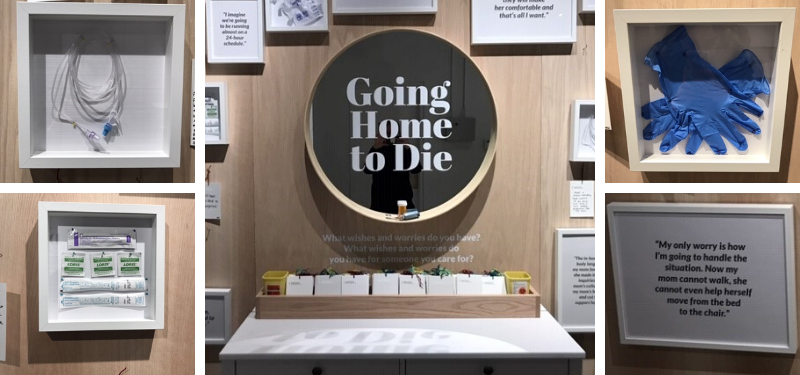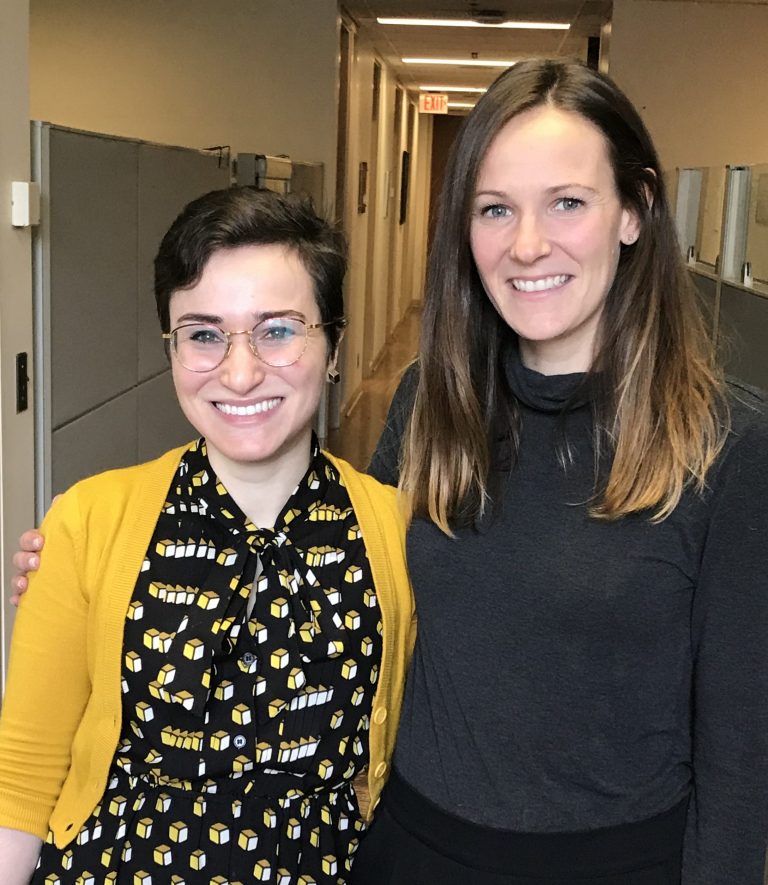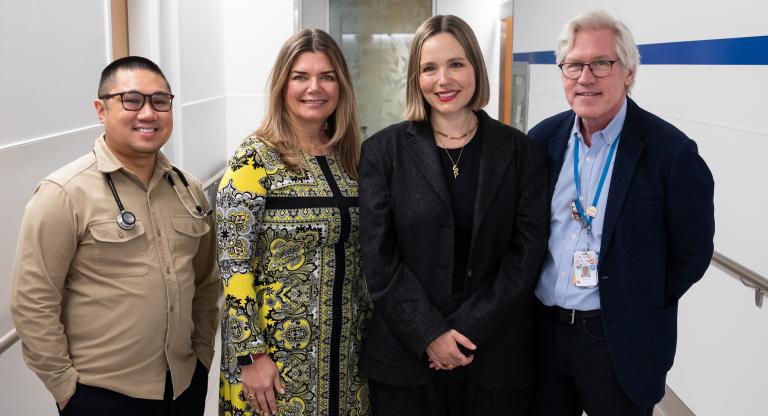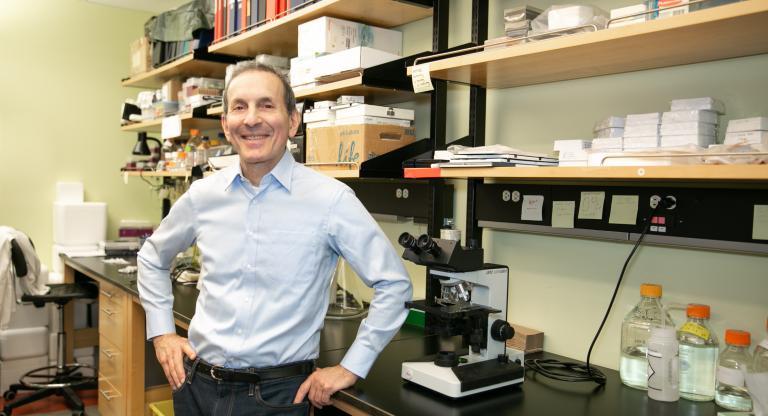Blending research and art to explore experiences of palliative care

Science and art often seem like distinct entities, but Dr. Sarina Isenberg’s work seeks to blend the two fields in order to share research around palliative care with a broader audience through creative installations.
As a scientist at the Temmy Latner Centre for Palliative Care and the Lunenfeld-Tanenbaum Research Institute at Sinai Health, and an assistant professor at the Department of Family and Community Medicine and the Institute for Health Policy, Management, and Evaluation at the University of Toronto, Sarina has an impressive background in research. Her area of study primarily concerns access to palliative care, and how to improve access for patients across settings including home-based palliative care, outpatient clinics, hospital-based consultations, and palliative care units, like Sinai Health’s own palliative care unit at Bridgepoint Active Healthcare.

Art and creative writing have also been long-time hobbies for Sarina. She found a new opportunity to weave creative inspiration with scientific exploration, resulting in a new installation as part of the DesignTO Festival. In collaboration with designers from the Moment, an innovation design studio in Toronto, Stephanie Saunders, a research coordinator at the Temmy Latner Centre, as well as a steering committee including a palliative nurse, two physicians and a patient advocate, she developed Going Home to Die, an installation at Artscape Youngplace. The steering committee is also working on a paper for a peer-reviewed journal, describing the collaboration and the process of translating research into a design installation.
The installation shares quotations from patients and caregivers involved in Sarina’s research, and also invites the exhibit participant to share their wishes and worries about “going home to die” for themselves or their loves ones. These wishes and worries become part of the design installation and a way for these personal experiences to be shared with the public.
“So often, researchers can get caught up in our tiny bubble of peer-reviewed publications and academic conferences, and rarely does our work touch the general public,” says Sarina. “Installations like Going Home to Die brings research to the public, and also facilitates an important dialogue about transitioning from hospital to home at the end of life and the medicalization of home at the end of life.”
Over 32 participants, including both patients and caregivers, contributed to the piece through surveys and interviews. To understand their experience, the team reviewed, compared, and analyzed the interviews of each participant.
When asked what she wants viewers to take away from this work, Sarina says, “My hope is that viewers walk away with increased knowledge about this vulnerable care transition, and gain a sense that they are not alone in their experiences. Dying is a natural process that we all eventually experience, and we can all plan for this through advance care planning conversations. These conversations alleviate the burden on loved ones and help facilitate a “good death.”
Going Home to Die is on display until January 31 from 8 a.m. to 9 p.m. daily at Artscape Youngplace, 3rd floor, part of Dying.exhibits, an exhibition series on end of life. Admission is free.












